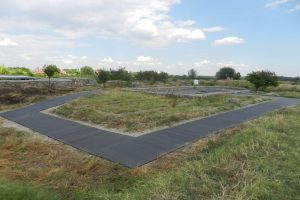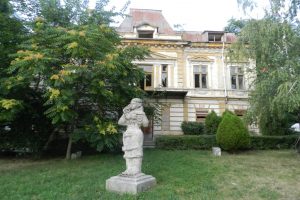

Statue of Saint Constantine the Great in the town of Reşca repesents this one on a black pedestal under which are mentioned important actions which led to the development of the empire, namely:
– in year 313 has developed the the Edict of Milan by which has given freedom to Christians;
– in 321 decreed the Sunday a day of rest throughout the empire;
– in 325 convened the First Ecumenical Council of Nicaea;
– rebuilt the road between Sucidava and Romula – Resca;
– in 330 he moved the capital to Constantinople.
Gaius Flavius Valerius Aurelius Constantinus (February 27, 272,-22 May 337), known as Constantine I, or within the Orthodox Church under the name of St. Constantine the Great, was a Roman Emperor, proclaimed Augustus by his troops on July 25, 306 AD and who led the Roman Empire until his death in 337.
Saint Constantine remained known until our time especially for the Edict of Milan in 313, which marks the entrance to the legality of the Christian religion throughout the empire for the first time in history, and for the organization of the First Ecumenical Council of Nicaea in 325; these actions are considered major factors in the spread of the Christian religion. His reputation as the first Christian emperor was recognized by historians beginning with Lactantius and Eusebius of Caesarea, until our times, although within the unorthodox environments there are still disputes about the sincerity of his religious convictions. These it would have been fed by the support that he further contended heathen deities, and that he was baptized only towards the end of his life.
The Church honors him among the saints, in the grup of the righteous , commemorating him along with his mother, Empress Helena, on May 21, is called “Holy Great Kings, with the Apostles Constantine and his mother Helena.”
The outstanding insistence of Constantine the Great to end well the various strategic works of fortifications on the border of the Danube, as the one from Sucidava (Celei, Olt county. ) or of repairing others more used, as the one between Sucidava and Romula (Resca, Olt county ) adding the uplifting of the Constantiniana city Daphne, proved the special affinity of the Roman emperor, with dacian origins, to his own gens, but also stemming from the care that he wore for the sacred area of the Daco-Getae.




